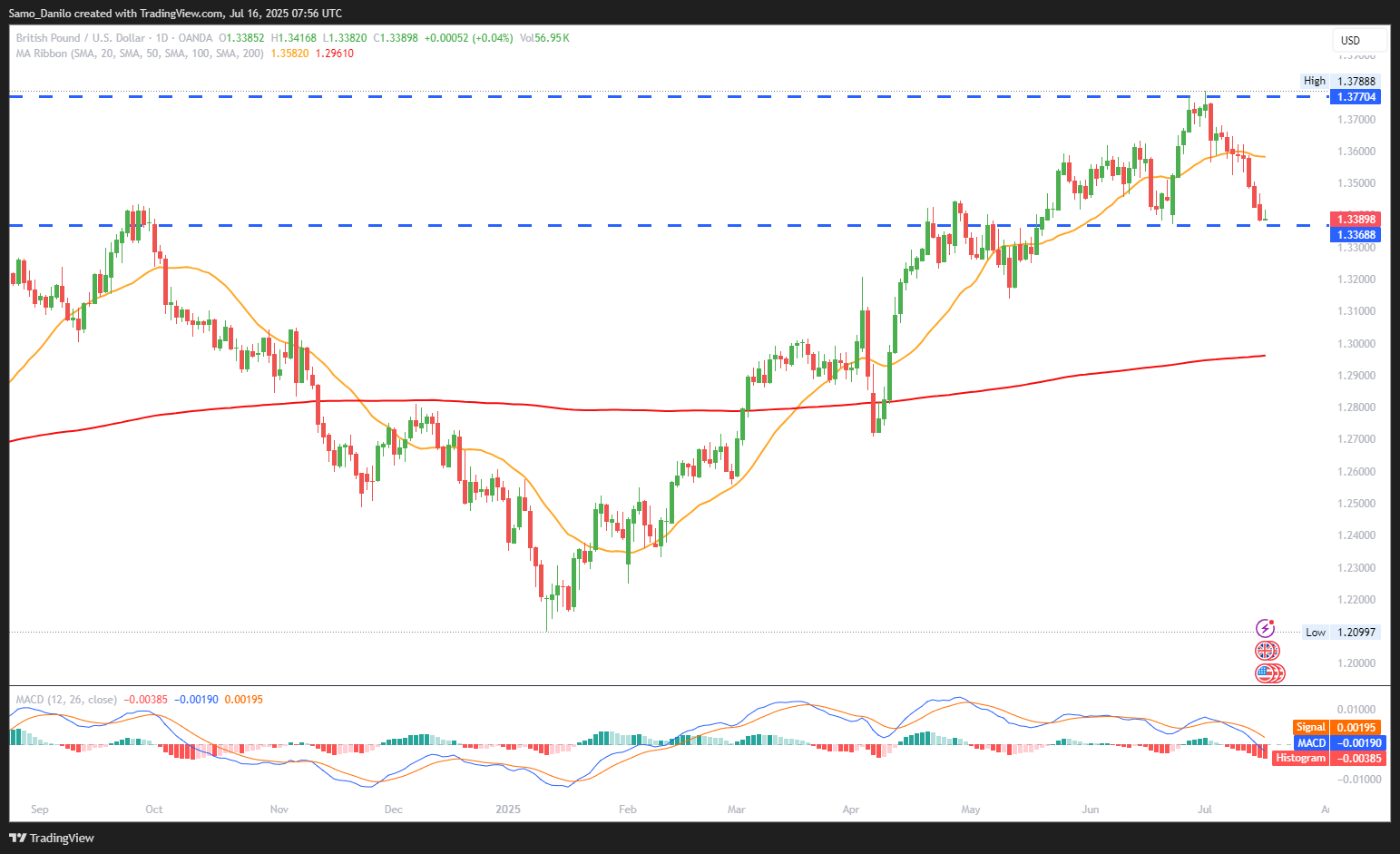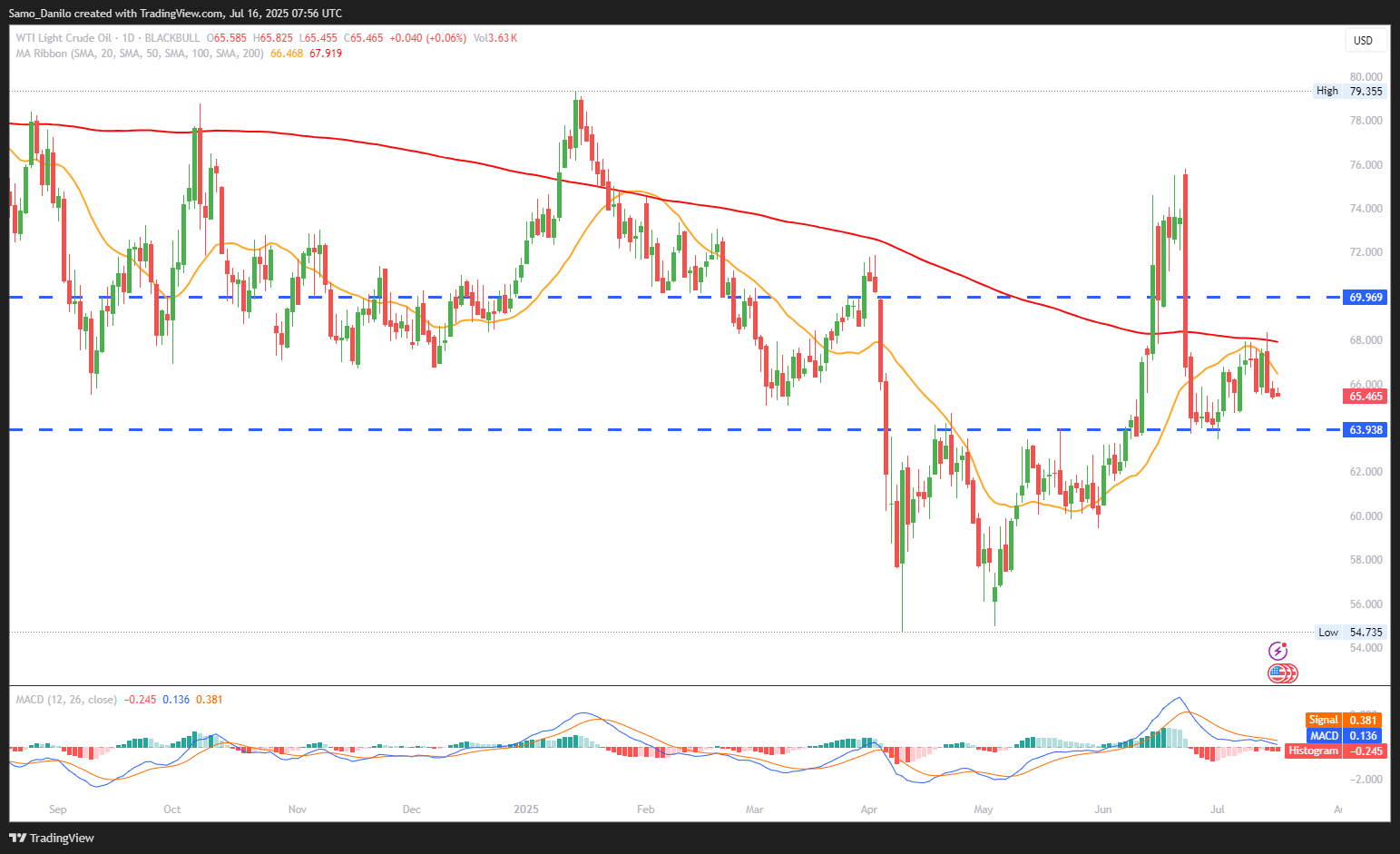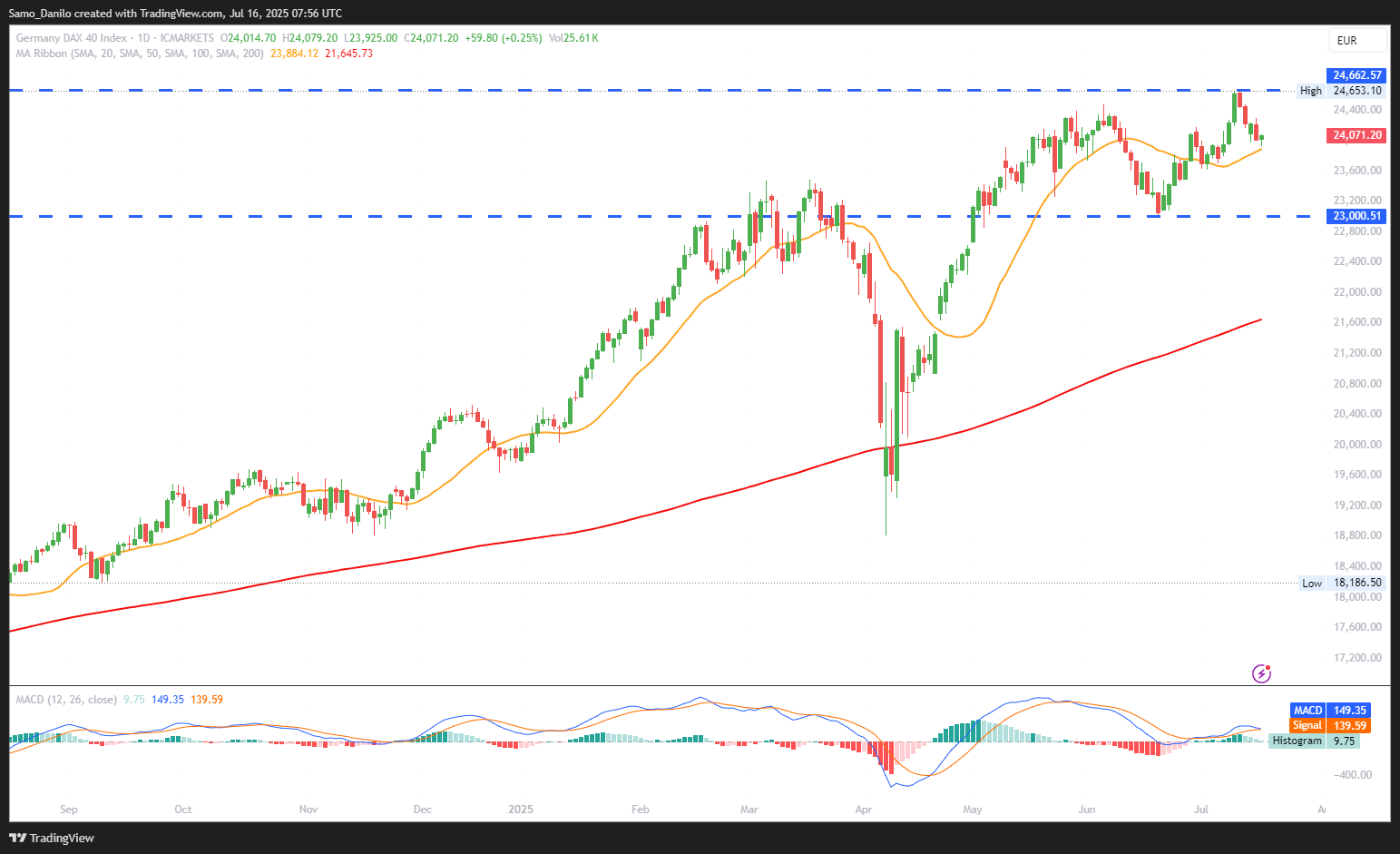EURUSD
- EUR/USD Price: The EUR/USD pair is gaining momentum, approaching 1.1700 during the European session on Tuesday. A broad pullback in the US Dollar has provided near-term support for the euro.
- US-EU Trade: Market sentiment brightened after President Trump confirmed that EU officials would visit Washington soon and expressed openness to further negotiations. This reduced immediate fears of a transatlantic trade clash.
- New Tariffs: President Trump introduced new levies on 22 nations—including the EU, Japan, South Korea, and North American partners—after they failed to reach trade agreements during the 90-day tariff pause. This move adds geopolitical risk but has had limited immediate impact on euro flows.
- US Inflation: US June Consumer Price Index (CPI) increased to 2.7% year-on-year, up from 2.4% in May, aligning with market expectations. The steady inflation print reinforced the case for keeping US interest rates higher for longer.
- Fed Officials: Recent comments from key Federal Reserve members emphasized that interest rates would remain elevated for an extended period, which could limit EUR/USD upside in the medium term despite immediate dollar weakness.
Closing statement: EUR/USD is supported in the short term by a weaker dollar and hopes for progress in US-EU trade talks. However, the pair faces headwinds from hawkish Fed signals and fresh trade tensions, which may cap further gains above 1.1700.
GBPUSD
- GBP/USD Price: GBP/USD trades slightly higher in early European hours on Wednesday, though it lacks strong follow-through and remains capped below the key 1.3400 level.
- UK Inflation: Headline UK inflation rose to 3.6% year-on-year in June (vs 3.4% prior), beating estimates. Core CPI also climbed to 3.7%, signaling persistent price pressures beyond food and energy.
- BoE Policy: The stronger inflation data complicates the Bank of England’s (BoE) policy outlook as it balances higher price pressures with signs of a weakening labor market ahead of the August policy meeting.
- US Rate Cut: Lingering inflation concerns in the US have all but eliminated expectations for an early Federal Reserve rate cut, supporting the dollar and limiting GBP/USD upside potential.
- Trade Deals: Washington finalized trade deals with the UK, Vietnam, Indonesia, and a partial deal with China. President Trump hinted at additional agreements soon, potentially including India, which underpins a cautiously positive tone for the pound.
Closing statement: GBP/USD is supported by higher UK inflation and progress on trade deals but remains restrained by broad dollar strength and lingering rate uncertainty. The pair needs sustained momentum above 1.3400 to confirm a stronger breakout.
XAUUSD
- XAU/USD Price: Gold price maintains modest intraday gains around $3,340 during early European hours, staying close to the three-week high reached previously, supported by lingering market caution.
- Fed Rate: CME’s FedWatch Tool shows markets fully pricing in a rate hold at the July Fed meeting, while odds for a September cut have dropped to 44% following the latest CPI data, limiting immediate upside for gold.
- Powell’s Position: The US Treasury Secretary stated President Trump does not intend to fire Fed Chair Powell but added that a former chair remaining on as governor could confuse markets — adding a layer of policy-related uncertainty that typically supports gold.
- US Tariffs: Trump announced a new 30% tariff on Mexican imports, escalating trade tensions and supporting gold’s safe-haven appeal. A public spat with Mexico’s president Sheinbaum further fueled market caution.
- Fed Official: Dallas Fed President Logan emphasized keeping rates elevated to contain inflation, particularly in light of tariff-related price pressures, which could weigh on gold in the medium term despite near-term support.
Closing statement: Gold remains underpinned by geopolitical and policy uncertainty, holding firm above $3,300. However, a persistently hawkish Fed outlook could limit further rallies, keeping the metal in a cautious consolidative phase.
CRUDE OIL
- Crude Oil Price: Crude oil prices erased earlier gains on Monday and fell further to session lows around $65.50 during Tuesday’s trading, reflecting renewed selling pressure.
- OPEC Outlook: OPEC’s July report reiterated expectations for higher oil supply through Q3, citing strong demand in Asia and improving economic conditions in both the US and Eurozone — tempering upward price momentum.
- Russia Sanctions: President Trump’s announcement of a 50-day deadline before applying additional sanctions on Russia has eased immediate concerns about potential supply disruptions, pressuring prices lower.
- US Inventories: The American Petroleum Institute (API) reported a massive crude inventory build to 19.1 million barrels, well above forecasts, adding to the bearish sentiment and signaling oversupply risks.
- Chinese Imports: China’s crude oil imports remained strong in June, reaching 49.9 million tons (+7% month-on-month), providing a partial floor to global demand expectations even as overall price action remains heavy.
Closing statement: Crude oil faces renewed downside pressure from surging US inventories and OPEC’s supply outlook, despite resilient Chinese demand. The market may stay vulnerable in the near term unless supply risks or stronger demand cues emerge.
DAX
- DAX Price: The DAX fell 0.42% on Tuesday, marking its fourth straight daily loss and closing at 24,060, as trade and macro concerns weighed on investor sentiment.
- US-EU Trade: Market worries intensified over a possible failure to secure a US-EU trade deal before Trump’s August 1 deadline, risking the imposition of 30% tariffs on EU exports, which dented confidence.
- Index Stocks: Banking stocks underperformed, with Commerzbank dropping 2.91% and Deutsche Bank slipping 0.53%, amid fears of economic slowdown. Meanwhile, automakers saw gains: BMW rose 1.92%, Mercedes-Benz climbed 1.49%, and both Porsche and Volkswagen advanced.
- Chip News: Reports of the US Commerce Department reviewing chip export licenses to China and NVIDIA’s plan to resume H20 chip exports supported broader tech sentiment, although its impact on the DAX was more muted.
- US Producer Prices: Investors await US producer price index (PPI) data due July 16, forecast at +2.5% YoY (down from 2.6% in May), which could influence global risk appetite and guide near-term market moves.
Closing statement: The DAX remains under pressure amid trade deal risks and economic uncertainty, despite sector-specific strength in autos. Upcoming US inflation data will be key to shaping the next market direction.





